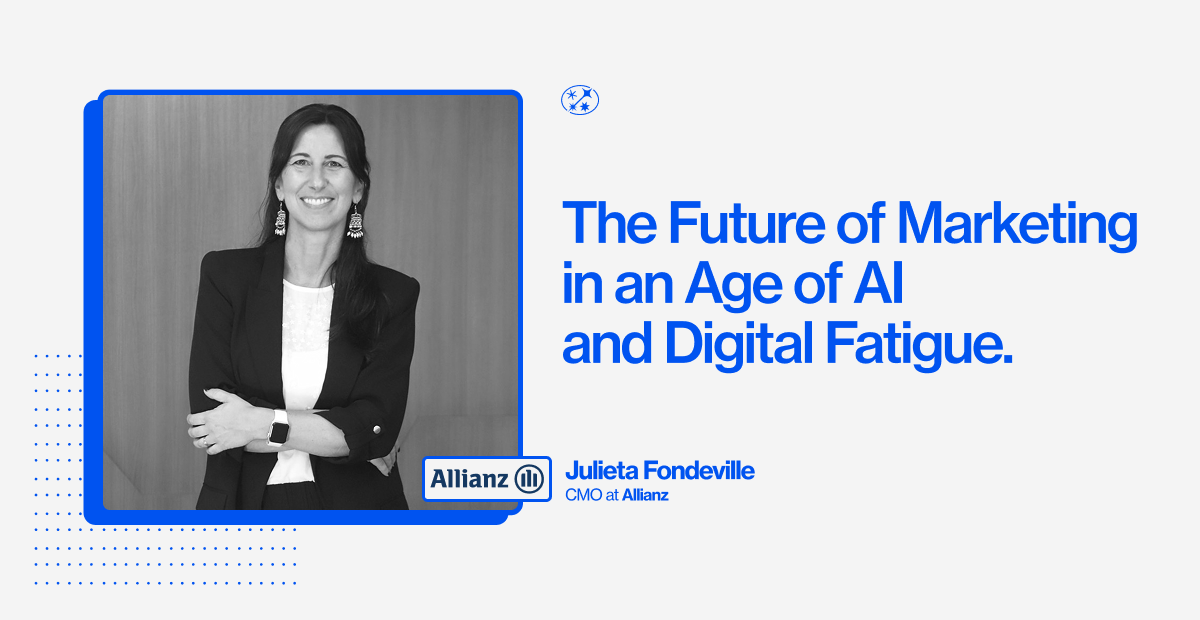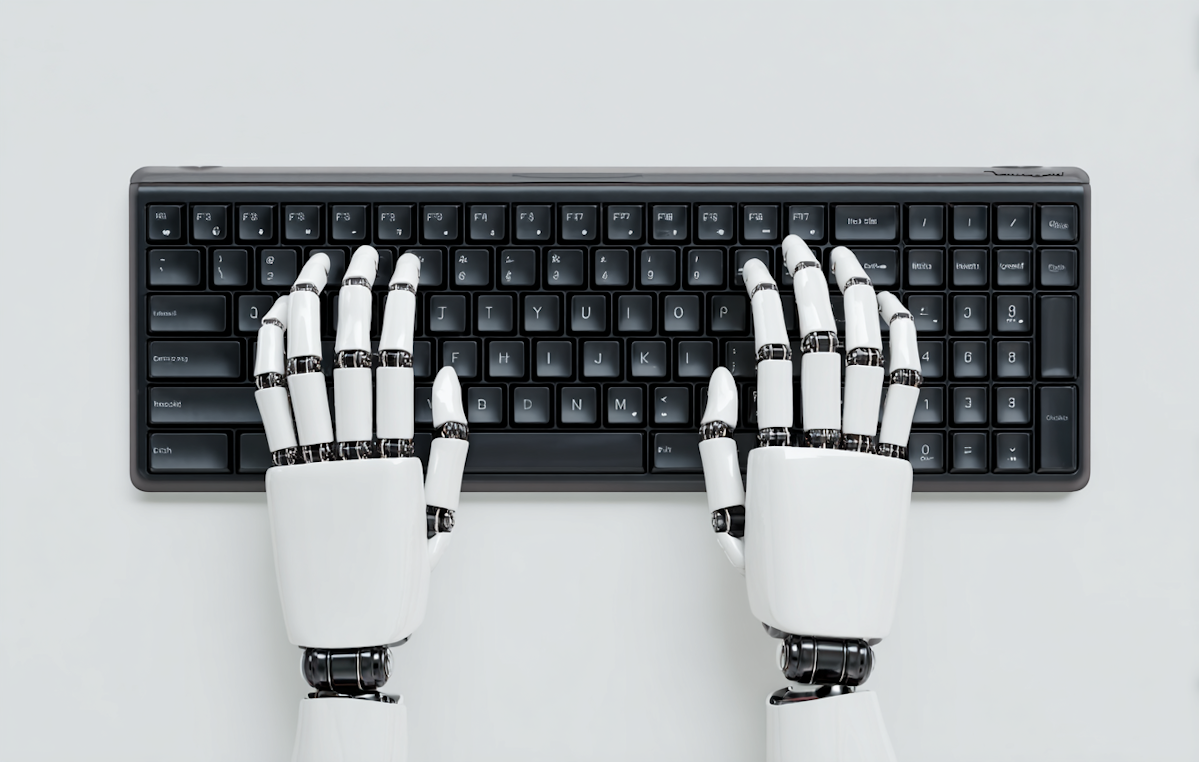The Future of Marketing in an Age of AI and Digital Fatigue
Get weekly strategy insights by our best humans


In a sea of executive titles it's easy to mistake "CMO" or "CXO" as mere roles. But in the case of Julieta Fondeville, they operate more like two sides of a long-term brand philosophy: one outward-facing, the other deeply internal. As Chief Marketing Officer and Chief Experience Officer at Allianz Argentina, Julieta isn’t just stewarding a brand—she’s shaping an evolving organizational culture through strategy, creativity, and systems thinking.
Over the past decade, her trajectory has mirrored a larger transformation in the discipline itself. From rebranding a legacy company to launching digital lead-generation platforms and embedding ESG principles into the brand's DNA, her work reflects a rare blend of consistency and adaptation. It's a case study in how marketing can become infrastructure, and modernizing a brand to stay compliant and fresh, discussing the need for sustainable frameworks in this brave new world.
In this conversation, we cover what it means to lead in a context of constant disruption—with AI, climate urgency, and digital fatigue redefining every playbook. We explore the frameworks she uses to integrate marketing, CX, internal communication and sustainability; how she thinks about metrics beyond vanity KPIs; and why balancing operational excellence with emotional intelligence might be the CMO's biggest competitive advantage in Latin America today.
From Brand Architect to CX Leader
How did you build your current role as CMO and CXO at Allianz, and what skills or experiences helped you in that transition?
It was a journey where I naturally took on new challenges and learned about new topics. I added new responsibilities as the world transformed and new needs around technology, consumption habits, communication, sales channels, data, and innovation emerged.
I started with the brand’s rebranding and the startup of the marketing area. Then, I developed a 360° marketing strategy based on three main pillars: sports, culture, and sustainability. This strategy aligned with the business strategy, focused on trust, solvency, and international backing.
We achieved significant results by maximizing visibility and reinforcing brand consistency across traditional and digital media, using a variety of tools like global and local sponsorships, naming rights, multi-platform communication with diverse audiences, incentive programs, and more.
In 2018, after several years of training in CX, we formally created the customer experience department, kicking off the organization’s internal transformation toward a customer-centric culture. We leveraged powerful tools to receive and understand real-time customer feedback. In 2020, amid the COVID crisis, our team virtually designed the Leads Allianz program—a tech platform to generate and manage leads end-to-end in the digital environment. Today, it is a growing source of sales.
I’m motivated by creating, transforming, and evolving. I’m passionate about my work: I enjoy seeing ideas materialize and bringing tangible improvements to the organization in a world of constant change and learning. Determination, resilience, and adaptability are the three key qualities that have accompanied me throughout this journey.
Sustainability and Brand Strategy
What role does sustainability play in Allianz’s marketing strategy? And how do you communicate ESG achievements to clients and partners?
Sustainability plays a central role at Allianz and in our strategy. We mainly work across three pillars:
- Climate Change – through measurement, reporting, and mitigation actions in our operations. We also run awareness and education campaigns for employees.
- Social Impact – mainly through volunteer work with vulnerable communities.
- Sustainability in our Business – a transversal pillar where we collaborate across all areas of the company to gradually introduce practices aligned with our purpose and strategy.
We frequently communicate with clients, strategic partners, and employees through internal comms and social media. We also publish an annual sustainability report, which compiles our progress and projects based on the GRI (Global Reporting Initiative) methodology.
AI with a human touch.
Artificial Intelligence is a promising tool, but it also presents new challenges for building trust and differentiation. What role do you see generative AI playing in Allianz’s marketing?
It definitely brings both opportunities and challenges. We’re just beginning to explore its potential.
Initially, we’re adopting AI to improve efficiency, especially for content creation and optimization. However, it’s still essential to balance this efficiency with human reflection. We’re also using AI to automate administrative tasks like reporting and data analysis.
Looking ahead, AI will create opportunities throughout the customer journey. The focus will shift toward more sophisticated machine learning applications that can analyze behavior, preferences, and sentiment, leading to more accurate personalization and segmentation.
A deep analysis of potential risks, including reputational ones, is fundamental. We’re already implementing some tools within Allianz and adopting best practices from other Group companies, with promising results.
Orchestrating the Brand
How do you manage marketing, PR, internal communication, customer experience, and sustainability in an integrated way? What role do metrics play?
It’s a challenge—things move fast—but that makes it dynamic and interesting.
I have a team of very talented people, multiple agencies and partners, and cross-functional teams working on projects across different areas. I aim to convey a vision every day: to be a team that creates value for the company, stands out for its quality, service, and efficiency, dares to be disruptive, anticipates trends—and, most importantly, enjoys the work.
Metrics are essential for decision-making, assessing our actions' real impact, optimizing resources, measuring returns, and aligning the marketing strategy with business objectives.
Without metrics, tracking progress, detecting opportunities, or justifying investments is impossible.
The CMO Dilemma
If you had to choose just one, what’s the biggest challenge CMOs face in Latin America today?
The biggest challenge today is building long-term brand value while also delivering immediate results in sales and service within increasingly competitive markets. This requires constantly adapting to digital acceleration (including AI) and its potential reputational risks and adjusting to shifting consumer behaviors.
One prediction?
AI-powered, data-driven marketing will enable hyper-segmentation and personalized experiences at every touchpoint.
Also, I wonder: will we see a massive digital detox among certain audiences? Could that force us to rethink experiences that go beyond the digital? Maybe...
Where to go next
- Check out our last memo drop for the latest on tech and marketing trends
- Our approach to brand compliance and ESG.
- How to rebuild your brand for what’s next.
- Julieta's LinkedIn Profile
👀 Want to know how we approach brand strategy? Let’s talk → Apply for a free workshop

